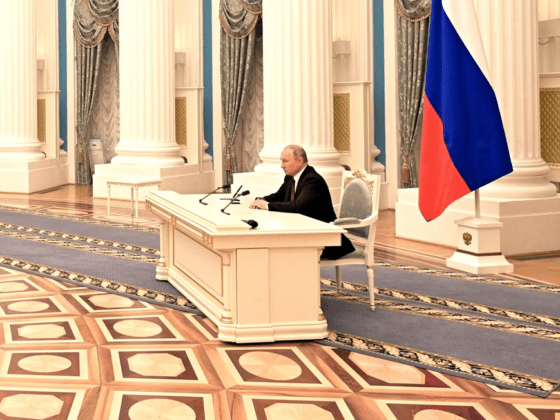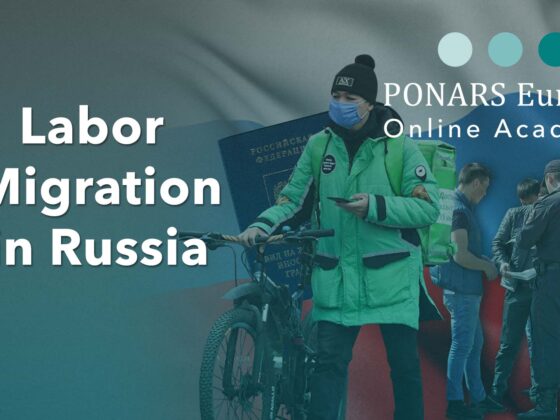(PONARS Eurasia Commentary) In the early morning hours of February 24, Russia began an all-out invasion of Ukraine, leaving the majority of observers wondering about the logic behind the move. Although the tension in the region had been rising since late 2021, it seemed that attacking a sovereign European country made no sense, given the steep consequences. That assumption was clearly wrong, primarily for not understanding Russia´s central and eastern European region view.
For decades from the 1990s, it seemed that classical geopolitics concerned with spheres of influence was dead. EU members were focused on market functionality and believed that the attractivity of the common market would help transform Russia into a like-minded trading partner. Unfortunately, Russia’s aggression made for an unpleasant wake-up call of grossly incorrect assumptions.
When the Soviet Union crumbled at the outset of the 1990s, states that (re)gained independence rejoiced and celebrated freedom. Looking from Central and Eastern Europe, that period seemed like the best time in ages as we could finally make independent decisions domestically and on foreign policy. Russia´s perspective was starkly different, though. Economic despair, internal struggles, and a steep loss of foreign influence became deeply carved in the minds of Russian citizens—marking the last decade of the twentieth century as a time to forget. The economy bounced back the following decade and stabilized, mainly as a result of massive revenues from energy exports. Russia was on track to becoming more connected and possibly cooperative across Europe.
However, the Kremlin´s perspectives hardly changed. Starting from the mid-2000s, we began to see Russian power projection again. The war with Georgia, the endless pressure on its borders, the promotion of the Eurasian Economic Union, and the Crimea annexation and fueling conflict in eastern Ukraine are some examples. Many incidents began to showcase Russia´s foreign policy ambitions and the dusting off of its old playbooks.
Were signals not seen? Where did it all go wrong? The answer may be more straightforward than one might think. Putin’s Russia never changed the way it looks at the international arena. The Cold War was about zero-sum games, spheres of influence, pushing and containing adversaries—all in the logic of one´s gain is the other´s loss. An actor can push and expand at the expense of others, as the reasoning of offensive realism suggests, or it can defend and contain its opponents, following the defensive-realistic pattern. This perspective never disappeared from the Kremlin´s inner walls and was apparently only inhibited by lack of capacity.
In the 1990s, Central and Eastern Europe embraced market-based cooperation and liberalism and moved toward closer integration with the West. Russia, expectedly, protested against NATO expansion, but those protests remained merely rhetorical at that time. Proposals to keep central Europe as a neutral bumper region were rejected by the states involved, and the decade was symbolically concluded by Czechia, Poland, and Hungary joining NATO in 1999. Regardless of how the Kremlin hated losing the chance to influence that region, it lacked the capacity to prevent it at that time. President Vladimir Putin expressed frustration with his perceptions of the expansion of U.S. influence several times. His infamous speech at the 2007 Munich conference and repeated complaints about the allegedly broken promises to not expand NATO eastwards and that “Western countries often try to swindle Russia” culminated in his demand in December 2021 that NATO has to return to its pre-1997 borders, marking a circular span to a traditional zero-sum game view.
Putin came to power with the plan to restore state control over Russian energy assets. Russian natural resource wealth is the key to its economic development and the cornerstone of its métier on the international scene. Restoring state control directly or by installing government-friendly figures in energy companies was the solution—right in time for rising energy prices. Between 2000 and 2008, Russian annual economic growth was never less than 5 percent GDP, allowing the country to stabilize, bolster some industrial and military sectors, and spread power aspirations—in correlation with energy prices and economic growth.
After decades of Putinism, no one should be surprised that Russia is consistently against multilateralism and the liberal democratic order. In that sense, Russia has never changed. The only thing that changed was Russia´s capacity to project hard power. With the economic stability regained in the 2000s, fueled by rising energy prices, came Russia´s renewed appetite to play a decisive role in its former sphere of influence. Regardless of how nonsensical the February attack on Ukraine was, the chain of events leading up to the confrontation was apparent if one combined Putin’s hardly altered world view and the upward performance of the Russian economy and military force—even if all were overstated.
Martin Jirušek is Assistant Professor at Masaryk University, Czech Republic, and Managing Editor of the Czech Journal of Political Science. He is currently a Fulbright Visiting Researcher at George Washington University.











